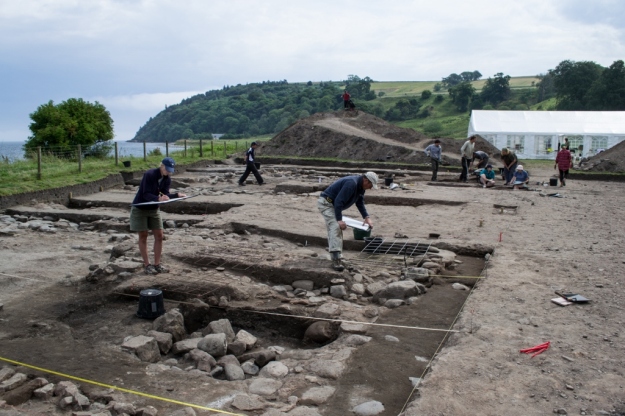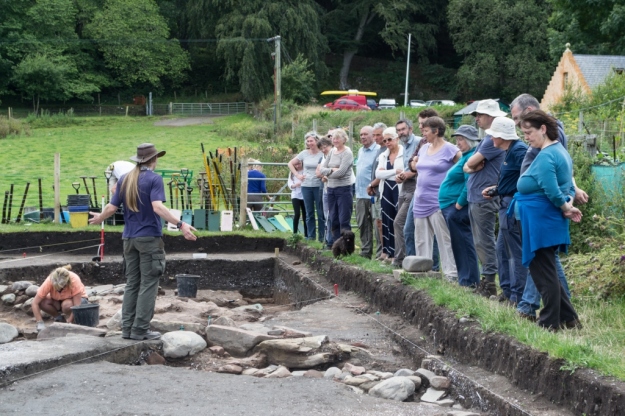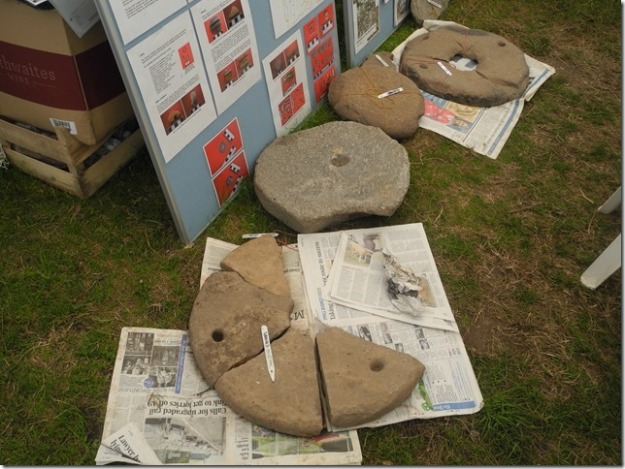by Mary Peteranna (AOC)
Our excavations in 2014 produced more informative data to assist with our research into the history of the Burgh of Cromarty including a more detailed picture of the layout and phasing of the buildings along each side of Thief’s Row, where our main excavation site is located (see a history of Thief’s Row) This includes the footings of three buildings shown on the 1880 Ordnance Survey map sheet on the north side of Thief’s Row, under which we identified the remains of another earlier structure, dating to the 18th century. At our limit of excavations on the north side of the road we uncovered three medieval structures with associated cobbled vennels and boundary walls – these have produced ceramics of 14th to 15th century date. One of these structures had been re-used during the 16th to early 18th centuries and the thickness of the clay-bonded walls would suggest it was at least a two-storey high building – most likely a merchant’s house.
To the south side of Thief’s Row, our excavations uncovered extensive structures and deposits of medieval date (13th to 15th centuries) including stone buildings and more ephemeral wattle and daub structures, along with their associated boundary gullies, vennels and evidence for small-scale smithing, which will be investigated further in 2015. These areas of settlement and activity were abandoned relatively early in the settlement history of the burgh, the structures being landscaped over with spreads of ash, fish bone, animal bone and shellfish middens that were most likely generated from activities taking place on the north side of Thief’s Row and along the High Street to the west. In the latter stage of the 18th century, the south side of the road was then given over to small garden plots and eventually more open fields.



